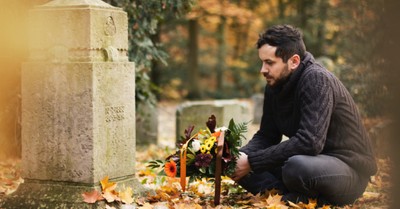A Colossal Flaming Jack-O’-Lantern in the Sky: Explaining Ghosts and Living by Transforming Truth

If Halloween is supposed to be frightening, the holiday came early for me last night.
The Nationals defeated the heavily favored Houston Astros last night to bring Washington their first World Series title since 1924. As a native Houstonian, watching my team lose was painful. But the Nationals are a great story of perseverance whose playoff run united a city divided by deep political rancor these days.
Now it’s time for something else Democrats and Republicans can do together.
Some 175 million Americans participated in Halloween last year, spending $9 billion in the process. NASA has even joined the effort, bringing us the Colossal Flaming Jack-O’-Lantern. (That’s my name, not theirs.)
It’s a picture of the sun captured by the space agency. Because of active regions burning more brightly than others, it really does look like a huge jack-o’-lantern in the sky.
It seems everyone is celebrating Halloween these days. But for many in the US, the holiday is more than candy and make-believe. Much more, in fact.
Why do people believe in ghosts?
According to a YouGov survey, 45 percent of Americans believe ghosts exist. Forty-three percent think ghosts can come back to haunt people or places.
What explains such belief?
“Paranormal investigator” Sharon A. Hill: “For over 200 years, many people, even scientists, have sought evidence for ghosts and life after death. There are millions of pages of previous research and experimentation into paranormal ideas. Definite proof has never been found.”
However, “because almost all paranormal investigators have a preconceived belief about ghosts, they do not look very hard for other explanations. They quickly embrace a paranormal conclusion since that is their goal.”
Psychology professor Christopher French agrees: “Studies show that if people are told that a location is haunted, they report more anomalous experiencers—sense of presence, shivers down the spine, changes in temperature, etc.—than if the suggestion is not given to them.” He adds: “Believers in the paranormal are more susceptible to such suggestions than skeptics.”
Terence Hines, a professor in New York City, adds: “With people getting less entranced with mainstream religion, some are looking for some kind of transcendent experience.”
How many believe in “God as described in the Bible”?
Dr. Hines points to the issue I’d like to discuss today: the fact that we live in a culture that measures truth by personal experience. (For insight on this fact relative to the media, please see Steve Yount’s new article on our website, “Is anyone telling the truth in today’s news? How to detect media bias.”)
According to the YouGov survey cited above, more than one-third of Americans say they have personally felt the presence of a spirit or ghost. Thirteen percent say they have communicated directly with a ghost or spirit of someone who has died.
Conversely, Pew Research Center reports that 80 percent of us believe in a higher power of some kind, but only 56 percent say they believe in “God as described in the Bible.”
When we remove north from our compass, we should not be surprised when the compass no longer works. Or when we become lost as a result.
For example, three men were killed and nine other people were taken to hospitals after a shooting Tuesday night at a Halloween costume party in Southern California. The evening violent crime count on October 31 is about 50 percent higher than on any other date during the year.
How to live like a “saint”
The good news is that Halloween (“All Hallows Eve”) is followed by All Saints Day (“All Hallows Day”). Tomorrow, Christians around the world will remember the saints of the church.
However, in the Bible, “saints” refers to all of God’s people, not just those who live especially exemplary lives. For example, Paul addressed Christians in Corinth (an especially “unsaintly” place) as “those sanctified in Christ Jesus, called to be saints together with all those who in every place call upon the name of our Lord Jesus Christ” (1 Corinthians 1:2).
One virtue all “saints” should have in common is our commitment to the truthfulness of Scripture and its authoritative relevance to every circumstance of life. Old Testament saints such as Moses and Daniel spoke truth to power at the risk of their lives (cf. Exodus 5:1; Daniel 5:17-28). New Testament saints such as Peter and Paul did the same (cf. Acts 4:8-12; 23:1ff).
When we choose to measure culture through Scripture rather than Scripture through culture, we align ourselves with truth that transcends our finite and fallen minds (cf. Isaiah 55:8-9). We find great peace and power in the transforming word of God (cf. Hebrews 4:12).
And we provide our broken culture a rock on which to stand amid the storms of life (Matthew 7:24-25) as we “offer them the message of life” (Philippians 2:16 GNT).
The question of the day
Oswald Chambers observed: “Nothing Jesus Christ ever said is common sense, it is revelation sense, and it reaches the shores where common sense fails.”
Will you live by “common sense” or by “revelation sense” today?
NOTE: The perennial songs of the Christmas season, like “Joy to the World” or “Silent Night,” have endured because they speak the truth the world always needs to be reminded of: that Jesus came to earth as a baby, to be one of us, so he could save us.
In our new 2019 Advent devotional, my wife, Janet, tells the story of how twenty-five well-known Christmas carols came to be—and how they still lead us to worship at a manger in Bethlehem. I pray you’ll be encouraged by The Songs Tell the Story.
The Daily Article Podcast is Here!
Publication Date: October 31, 2019
Photo Courtesy: NASA



















